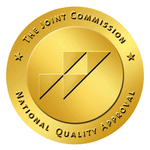By Lucas Tolbert
It Began With Morphine…
In the early 1960s my grandfather, a smoker of two packs of unfiltered Camels a day, died of lung cancer. Unfortunately for him, WWII and the Korean War had seen a spike in the incidence of morphine addiction from soldiers bringing home the habits they’d picked up to deal with the horrors of war. This influx of addiction precipitated a national opiate addiction scare that was responsible, no doubt, for the medical professionals treating my grandfather to withhold morphine for much of his illness. This denial was certainly enforced during his last days and resulted in an exceptionally painful death.
Heroin As An Alternative To Pain
In 1898 (through 1910) what is now the Bayer pharmaceutical released diacetylmorphine under the brand name ‘Heroin’ as a pain reliever and (perhaps more so) as a cough suppressant. Pure Heroin was sold for less than $5 (US) an ounce, and, it was advertised, less than that if bought in bulk. Heroin was widely advertised by Bayer as a less addictive alternative to morphine, safe for men, women and children.
Oxycodone Is Our Generation’s Response To Pain
Almost exactly 100 years later in 1996, Purdue Pharma release an extended-release formulation of oxycodone called “OxyContin” (OC). This release was accompanied by an aggressive marketing campaign and the application of “significant political pressure” to relax the prescription restrictions regarding OC. Purdue’s advertisements and literature to doctors touted OC as having “less euphoric effect and less abuse potential” than other opiate painkillers and, in fact, those taking low doses of the drug could quit without suffering any withdrawals. They went so far as to suggest that OC should be considered“a safer alternative to even Aspirin and Tylenol and good for anyone who needed pain relief for ‘several days’ or more.”
Purdue was eventually ordered to pay $634 million in fines for their marketing practices and misbranding. While that’s a whopping fee, it pales some in comparison to the profits OC generated for Purdue (more than $2.5 billion dollars in 2008 alone). In 2007, Purdue was producing 75.2 tons of OC; up from 11.5 tons in 1997. As is generally common knowledge now, OC addiction tore through rural North America. Overdoses skyrocketed and entire regions were swamped with OC. Some First Nations communities have adult OxyContin addiction rates of more than 70%.
And heroin? It’s now one of the world’s most abused drugs, and certainly one of its most dangerous, with an estimated 21 million addicts worldwide.
Balancing Pain Management With Addiction Awareness
That prescription drug abuse and addiction is a serious problem is a fact it’s doubtful anyone would deny, medical professional or layman. And there’s no shortage of publicity to that effect. However, less well known is the widespread (and understandable) cost of under-medicating patients with chronic pain which results from opiate-prescribing concerns. One poll of pain specialists suggested that some 77% of those suffering from acute and/or chronic pain (and without addiction issues) are without sufficient pain medication.
Finding a balance between keeping patients pain-free and keeping a sufficiently tight rein on opiate medication to ensure that they are not distributed irresponsibly has become an increasingly difficult prospect for medical professionals. While there are probably no perfect answers – some people will live with unnecessary pain and some will abuse painkillers.
Are Measures To Reduce Pain Pill Abuse Working?
There are some interesting experiments being done in pain management and some universal steps that can be taken to mitigate abuse. There’s an almost perfect microcosm of this issue being played out in Tillamook County, Oregon. Dr. Harry Rinehart runs a pain clinic in the town of Wheeler where he has become unofficially known as the ‘Pioneer of Pain’ due to the novelty of his philosophy: that patients with pain (and even addictions) should get enough medication to ensure their comfort.
That flies in the face of the current prescribing trend – to issue medication as conservatively as possible. Dr. Rinehart’s methods have even drawn the ire of law enforcement. Tillamook County’s Attorney General William Porter has filed a number of complaints against Dr. Rinehart to the Board of Medicine, concerned that the seemingly liberal prescription policy is possibly responsible for putting opiate pills on the street. To date, all of the complaints have been dismissed.
Rinehart further differs from his colleagues in that rather than meet with patients individually, those under his care are required to attend a group pain management meeting once every three months. Rinehart points out that those group meetings have had huge success in other contexts, creating bonds of camaraderie, shared experience, and support…So why not pain management?
An Individualized Plan Is Key
To be sure no one unauthorized has access to the medications, he also insists that his patients bring him a photograph of their medication locked up in the lockbox he requires them to keep. Those patients are further required to bring their lockboxes with them when picking up any medication. Whether or not his system will prove an effective (or ethical) one in the long term remains to be seen. For the duration, however, prescription abuse can be curbed and pain more effectively treated when doctors, patients, pharmacists, families and caretakers work together to establish individual plans for each patient and keep an eye out for indications of abuse.
It Began With Morphine…
In the early 1960s my grandfather, a smoker of two packs of unfiltered Camels a day, died of lung cancer. Unfortunately for him, WWII and the Korean War had seen a spike in the incidence of morphine addiction from soldiers bringing home the habits they’d picked up to deal with the horrors of war. This influx of addiction precipitated a national opiate addiction scare that was responsible, no doubt, for the medical professionals treating my grandfather to withhold morphine for much of his illness. This denial was certainly enforced during his last days and resulted in an exceptionally painful death.
Heroin As An Alternative To Pain
In 1898 (through 1910) what is now the Bayer pharmaceutical released diacetylmorphine under the brand name ‘Heroin’ as a pain reliever and (perhaps more so) as a cough suppressant. Pure Heroin was sold for less than $5 (US) an ounce, and, it was advertised, less than that if bought in bulk. Heroin was widely advertised by Bayer as a less addictive alternative to morphine, safe for men, women and children.
Oxycodone Is Our Generation’s Response To Pain
Almost exactly 100 years later in 1996, Purdue Pharma release an extended-release formulation of oxycodone called “OxyContin” (OC). This release was accompanied by an aggressive marketing campaign and the application of “significant political pressure” to relax the prescription restrictions regarding OC. Purdue’s advertisements and literature to doctors touted OC as having “less euphoric effect and less abuse potential” than other opiate painkillers and, in fact, those taking low doses of the drug could quit without suffering any withdrawals. They went so far as to suggest that OC should be considered“a safer alternative to even Aspirin and Tylenol and good for anyone who needed pain relief for ‘several days’ or more.”
Purdue was eventually ordered to pay $634 million in fines for their marketing practices and misbranding. While that’s a whopping fee, it pales some in comparison to the profits OC generated for Purdue (more than $2.5 billion dollars in 2008 alone). In 2007, Purdue was producing 75.2 tons of OC; up from 11.5 tons in 1997. As is generally common knowledge now, OC addiction tore through rural North America. Overdoses skyrocketed and entire regions were swamped with OC. Some First Nations communities have adult OxyContin addiction rates of more than 70%.
And heroin? It’s now one of the world’s most abused drugs, and certainly one of its most dangerous, with an estimated 21 million addicts worldwide.
Balancing Pain Management With Addiction Awareness
That prescription drug abuse and addiction is a serious problem is a fact it’s doubtful anyone would deny, medical professional or layman. And there’s no shortage of publicity to that effect. However, less well known is the widespread (and understandable) cost of under-medicating patients with chronic pain which results from opiate-prescribing concerns. One poll of pain specialists suggested that some 77% of those suffering from acute and/or chronic pain (and without addiction issues) are without sufficient pain medication.
Finding a balance between keeping patients pain-free and keeping a sufficiently tight rein on opiate medication to ensure that they are not distributed irresponsibly has become an increasingly difficult prospect for medical professionals. While there are probably no perfect answers – some people will live with unnecessary pain and some will abuse painkillers.
Are Measures To Reduce Pain Pill Abuse Working?
There are some interesting experiments being done in pain management and some universal steps that can be taken to mitigate abuse. There’s an almost perfect microcosm of this issue being played out in Tillamook County, Oregon. Dr. Harry Rinehart runs a pain clinic in the town of Wheeler where he has become unofficially known as the ‘Pioneer of Pain’ due to the novelty of his philosophy: that patients with pain (and even addictions) should get enough medication to ensure their comfort.
That flies in the face of the current prescribing trend – to issue medication as conservatively as possible. Dr. Rinehart’s methods have even drawn the ire of law enforcement. Tillamook County’s Attorney General William Porter has filed a number of complaints against Dr. Rinehart to the Board of Medicine, concerned that the seemingly liberal prescription policy is possibly responsible for putting opiate pills on the street. To date, all of the complaints have been dismissed.
Rinehart further differs from his colleagues in that rather than meet with patients individually, those under his care are required to attend a group pain management meeting once every three months. Rinehart points out that those group meetings have had huge success in other contexts, creating bonds of camaraderie, shared experience, and support…So why not pain management?
An Individualized Plan Is Key
To be sure no one unauthorized has access to the medications, he also insists that his patients bring him a photograph of their medication locked up in the lockbox he requires them to keep. Those patients are further required to bring their lockboxes with them when picking up any medication. Whether or not his system will prove an effective (or ethical) one in the long term remains to be seen. For the duration, however, prescription abuse can be curbed and pain more effectively treated when doctors, patients, pharmacists, families and caretakers work together to establish individual plans for each patient and keep an eye out for indications of abuse.


 RSS Feed
RSS Feed
